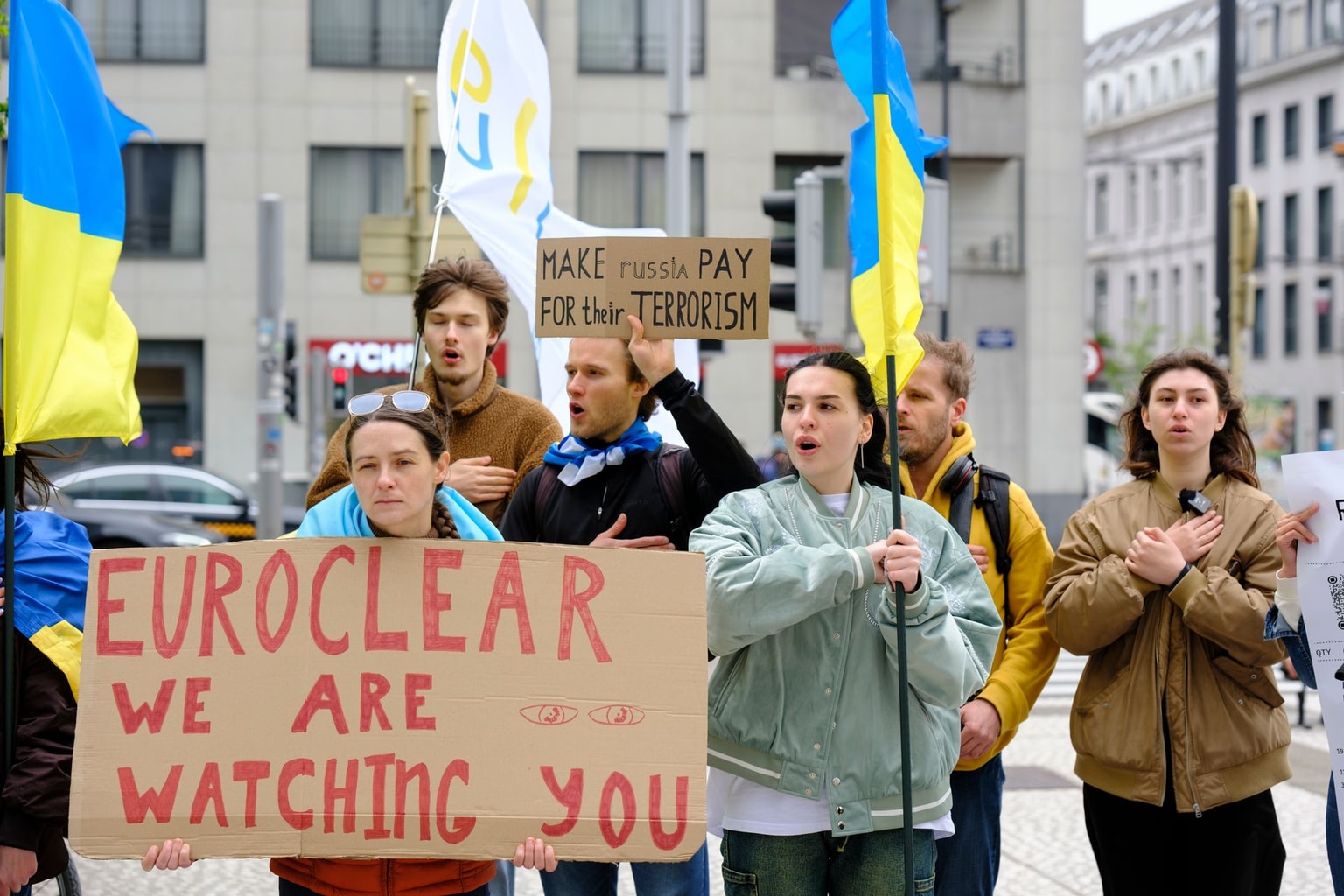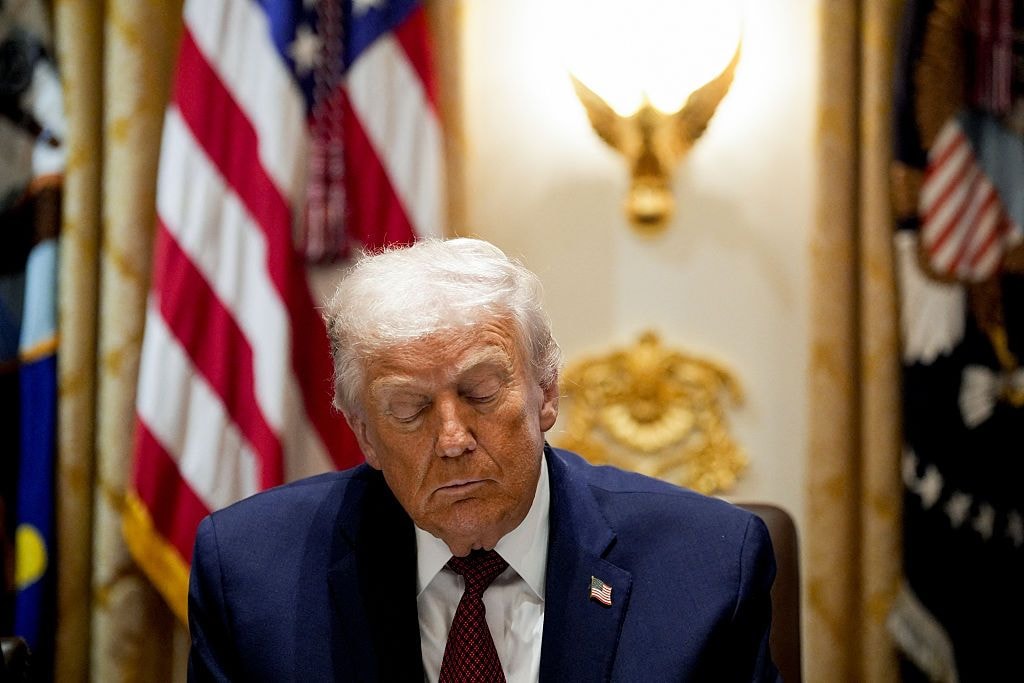Francis Farrell: Ukraine could still lose the war. Let’s get some things straight

This November has been a particularly grim one here in Ukraine.
Over the past month, two media sensations in big Western magazines served as a sober wake-up call about the state of the war.
First, Simon Shuster’s profile in TIME magazine on Ukrainian President Volodymyr Zelensky’s “lonely fight” 20 months into the war, Zelensky’s cool reception in Washington as U.S. support for Ukraine falters, and his apparent isolation from some of his highest-ranking officials who see the prospects of victory as increasingly faint.
The feature was a far cry from the heroic portrayal Zelensky was given in May 2022 by Shuster, who has consistently received deeper access to the Ukrainian leader over the full-scale war than any other journalist.
Then came an interview in The Economist with Ukrainian Commander-in-Chief Valerii Zaluzhnyi, who all but admitted that the war is at something akin to a stalemate, stuck in high-intensity positional fighting where liberating just a kilometer of mined, bombed-out Ukrainian land tends to cost hundreds of lives, thousands of shells, and millions of dollars worth of equipment.
In the aftermath of both pieces came more reports of tensions between Zelensky and Zaluzhnyi, stoked by the president’s firing of Special Operations Forces Commander Viktor Khorenko, supposedly behind Zaluzhnyi’s back.
This has all taken place on the backdrop of a worsening situation on the battlefield, as Ukraine’s summer counteroffensive has culminated without achieving any major strategic gains, while Russia has retaken the initiative in the country’s east.
I don’t want to get into the politics of Zelensky’s inner circle, or speculate on tensions between the president and military in the wake of Zaluzhnyi’s column. What I do want to do is lay out some objective facts about where we are now in the war, why that is, and what we can expect in 2024 and beyond, if and if not Western support for Ukraine changes in scale or nature.
1. Zaluzhnyi is right. The front line across Ukraine has become static, and taking territory is becoming harder and harder for both sides.
As the war drags on and both sides transform how they fight, the traditional defender’s advantage has thus far been amplified by the expansion of both sides’ mobilized armies, the evolution of drone warfare, and, most importantly, the reinforcement and improvement of defensive lines with fortifications and minefields.
We didn’t need Zaluzhnyi to tell us this: It has been obvious for months for anyone watching the war with a strong handle on reality. From Bakhmut, to Ukraine’s summer counteroffensive, to the fierce Russian assault on Avdiivka, both sides’ operations across 2023 show that the age of successful maneuver warfare in Ukraine is likely over, and will be for a long time until some big changes.
Zaluzhnyi’s argument that a breakthrough can come through a technological upper hand also makes sense, but there is no silver bullet. Long-range missiles, better electronic warfare (EW) and counter-EW capabilities, and winning the drone war could all help Ukraine get the upper hand, but all of it needs to come together with continued conventional military support at scale.
Both require one thing: real commitment from the West to Ukrainian battlefield success.

2. The main reason Ukraine finds itself in this position is because it wasn't given the weapons it needed to change the game before the war settled into this positional tussle.
Here, I can't help but recall the bittersweet memories of last autumn when, just after the liberation of Lyman, Ukraine was on the brink of pushing onward to Kreminna and Sievierodonetsk, potentially causing another collapse in Russian defenses. Russia had only just begun a desperate mobilization of its citizens and had not yet started to build the fortified defensive lines that became key to stopping Ukraine's counteroffensive.
Imagine if, back then, Ukraine had had long-range missiles, Western tanks, and more artillery, including the U.S. DPICM cluster munition shells that were only given this summer... Do I need to go on?
The West had so much time and yet, over the course of 21 months of the full-scale war, it never seemed to feel much sense of urgency. We have now reached a point where, because Ukraine wasn't given what it needed to win a short war, NATO countries are forced to hunt around the world for artillery shells and scramble to increase their own production to keep Ukraine afloat in a long one.
3. While it remains taboo to admit, it’s now nearly impossible to deny that the West, in particular Washington, does not want a complete Ukrainian victory.
You only have to look at months and months of public statements, which are best summed up by the tired commitment to support Ukraine for “as long as it takes,” echoed from Washington to Paris to Berlin. On U.S. Defense Secretary Lloyd Austin’s Nov. 20 visit to Ukraine, the wording “here for the long haul” was chosen.
As long as it takes for what?
There’s a reason Western officials don’t talk about restoring Ukrainian sovereign territory to its 1991 borders. The idea of Ukraine truly defeating Russia and threatening to return all occupied territories, including Crimea, is at the core of the West’s fear of escalation and possible nuclear use by Russia.
This fear is not completely unfounded. Yes, every Ukrainian victory has been a hit to Putin’s ego, and yes, every new Western system delivered to Ukraine makes him seethe a little inside. However, these “red lines” are nothing compared to the prospect of him losing everything: the war, Crimea, and his legitimacy as an empire-building tsar. Only at that point does the nuclear threat become real, but it is Ukraine that would be in danger, and Ukraine that is ready to take that risk.

4. The West’s unwillingness to empower a Ukrainian victory is no clearer than in the issue of providing long-range missiles.
Long-range missiles may not be wonder weapons that will quickly cripple Russia’s war effort on their own, but they sure are a good indicator of political will.
The main culprit here is, of course, the U.S.-built ATACMS, which can be launched right out of the same HIMARS and M270 systems that Ukraine received last year. Ukraine has since then publicly begged for ATACMS, the long-range version of which could strike any target in Ukraine’s occupied territories, including strategically key airfields and the Black Sea Fleet.
“We think the Ukrainians can change the dynamic on the battlefield and achieve the type of effects they want to push the Russians back without ATACMS,” then-U.S. Undersecretary of Defense for Policy Colin Kahl said in January, adding that they are not needed for targets “directly relevant to the current fight.”
This was not a line of argument but an open lie.
Ukraine finally received the older, shorter-range version of the ATACMS in October (these have a stated maximum range of only 165 kilometers and carry cluster munitions rather than a single high-explosive warhead) and immediately put them to good use. Ukraine’s Oct. 17 attack on Russian airfields in occupied Luhansk and Berdiansk reportedly destroyed at least nine Russian military helicopters and damaged up to 15 more. These were, of course, the very same helicopters that had hammered Ukrainian forces to great effect over four months of the counteroffensive.
Then there is the German Taurus, which flies even further than ATACMS and can carry a 480-kilogram dual-stage warhead, perfect for destroying the illegally-built Crimean Bridge between the occupied peninsula and the Russian mainland. German Chancellor Olaf Scholz has openly admitted his fear of Ukraine using these missiles against the bridge, and it wouldn’t be a stretch to suggest that Washington has the same qualms about the long-range ATACMS.
5. Ukraine’s war effort depends most of all on Washington, where bipartisan support for Ukraine is openly faltering in Congress, and a presidential election could bring it all down.
Again, we return to the question of time. How much weight can phrases like “for as long as it takes” or “for the long haul” hold in a democratic country with elections in just a year’s time? What about when you add the fact that the clear favorite to win the opposition nomination is an open Putin sympathizer who actively campaigns against military aid for Ukraine? The return of a character like Donald Trump to the presidency would not only threaten the U.S. democracy but could also mean life or death for Ukraine.

6. Even if Western military support continues to trickle in, Ukraine cannot fight a war at this intensity on its own forever.
In an industrial-scale war like this, there are some resources that even the most generous of Western funding cannot replenish: people. For as long as Russia is able to keep throwing tens of thousands of men and hundreds of thousands of shells at Ukrainian lines, Ukraine will continue to lose its best people at an unsustainable rate.
Whether it’s taking more and more Ukrainian men off to war, the constant need for basics like bulletproof vests and cars to be funded by civilians, or the many other immense social and economic strains that the country is currently under, things can’t continue like this indefinitely.
The way Ukraine fought off Russia’s attempt to take Kyiv, has struck back in successful counteroffensives, and remains in the fight against the immense Russian military machine is nothing short of unbelievable. No country should ever have to go through the campaign of total annihilation that Ukraine is standing against, but even Ukraine can’t be expected to be able to withstand the pressure forever.
7. The high cost of war on both sides means eventual peace negotiations are not unthinkable, but discussions about them usually get everything wrong.
Talk of peace negotiations between Ukraine and Russia, often among those in the West opposed to continued military aid to Ukraine, usually goes down an enticingly simplistic causal path: reduce aid or cut it off completely → force Zelensky to “negotiate” → peace in Ukraine.
Why does a country at war go to the negotiating table?
If both sides are exhausted and have a strong mutual interest in ending hostilities, then perhaps a ceasefire can be agreed upon. But if a state-on-state war is developing to favor one side, the side losing might sue for peace, resigning themselves to giving up a lot – often humiliating themselves in the process – in the hope of avoiding losing it all. Read between the lines, and these arguments to pressure the Ukrainian leader to negotiate are really pushing for Ukraine to start losing the war.
This brings us to Russia. Barring total surrender, the end of the war is not Zelensky’s choice alone – it can’t happen without Putin, and for that, something major has to shift the battlefield in Ukraine’s favor to force the Russian dictator to change course.
On the same day as Austin’s visit to Kyiv, a tweet by the U.S. Mission to NATO said that Washington is “focused on setting conditions for a just, durable, and sustainable peace.” The post generated plenty of angry backlash from Ukrainians, taking it as an admission that the U.S. would not support Ukraine until victory. The fact is, we knew that already, but the problem is that so far, even the “setting conditions” part is not being done. Dwindling arms supplies and internal political divisions set conditions not for a durable peace but instead for Moscow to be vindicated in its plan for victory.
8. Russia’s mission to destroy independent Ukraine hasn’t changed. Moscow has little left to lose, and its strategy of tiring out the West is slowly working.
“If Russia stops fighting, there will be no war, but if Ukraine stops fighting, there will be no Ukraine.” This phrase was often repeated in the early months of the full-scale war, and the truth of it hasn’t changed since. Nor have Russia’s maximalist war aims in Ukraine. From official statements to propaganda narratives, Russia shows no signs of giving up on destroying an independent Ukraine.
The Battle of Kyiv was Russia’s most humiliating defeat, but it hasn’t stopped army recruitment advertisements from promising Russian soldiers the opportunity to soon be able to buy real estate in the Ukrainian capital. If the supply of shells to Ukraine slows to a trickle or dries up completely, Russia will almost certainly start marching forward. When it does that, for Ukraine, it means more Bakhmuts and Avdiivkas, more cities wiped off the earth, more torture chambers, more deported children, and thousands more soldiers’ lives lost.
The question of time again looms. Sure, Ukraine may receive enough to hold the line against Russia over 2024, but what about 2025 or 2026? If, through a lack of equipment, ammunition, and personnel, the Ukrainian military’s capacity to fight is eventually degraded enough, cities like Kharkiv and even Kyiv could once again come under threat of Russian occupation.

9. To end the war with an independent Ukraine, the West must provide honest answers to two questions.
The first question is, “What will you do to permanently stop Russia from wanting and being able to take more Ukrainian territory?” The answer should be obvious: to finally empower a Ukrainian victory by giving all available weapons systems that have so far been held back. Airpower, long-range missiles, more tanks, armored vehicles, mine-clearing equipment, drones, everything; Ukrainians have been calling for this since the very beginning.
But if complete victory is seen as neither possible nor desirable by Ukraine’s partners, the next best thing would be setting conditions for Russia to want to negotiate, but that can only be achieved by putting pressure back on Moscow. There are few options left: either properly arm Ukraine for a more effective counteroffensive than last time or, perhaps, give Kyiv the long-range missiles to destroy the Kerch Bridge, the Black Sea Fleet and, with them, Putin’s dream of a Russian Crimean paradise.
The second question is, “What incentive will you give to Russia to not quickly break any ceasefire deal and finish what they started?” This is the “just, durable, and sustainable” peace that Washington frequently refers to.
Yes, Western military aid to Ukraine must continue after the shooting stops, as Russia’s military-industrial complex and society have now been put firmly on a war footing. That’s the absolute minimum, but what really must be offered to Ukraine is NATO membership. Security guarantees are not enough – they have not worked in the past in the face of Russia’s lack of respect for any signed piece of paper.
The world is changing, and without action, the barriers that once deterred countries from invading and conquering their neighbors all over the globe will continue to dissipate. That action must start with Ukraine, and it must start by not taking Ukraine’s survival for granted.
Editor’s Note: The opinions expressed in the op-ed section are those of the authors and do not purport to reflect the views of the Kyiv Independent.
Note from the author:
Hi, this is Francis Farrell, thank you for hearing me out in what might have not been the happiest of reads. Trust me, it wasn't fun to write either. But as I have said before a few times, keeping in touch with reality is one of the most important parts about keeping one's head above water in these times, as an individual or as a country. However dark that reality might get, it won't stop us from working. Please consider supporting our reporting.










